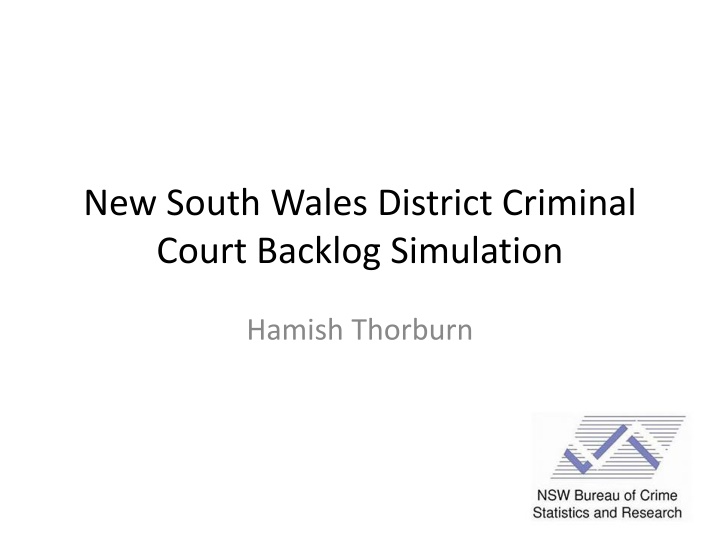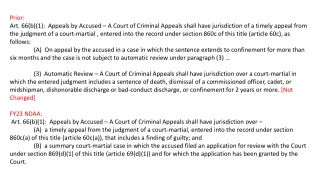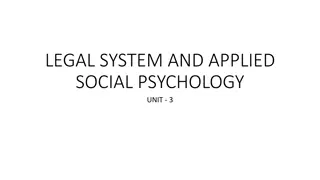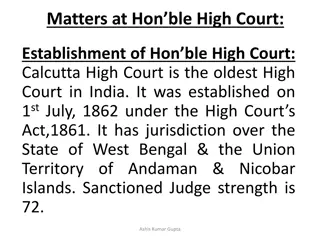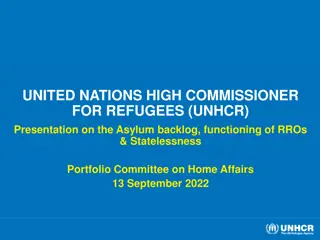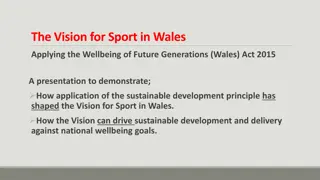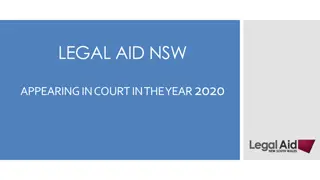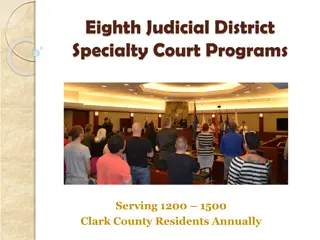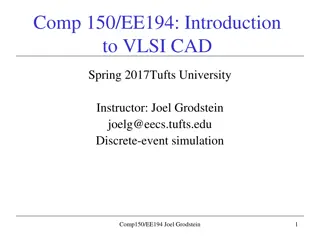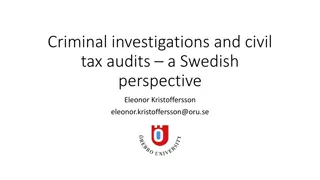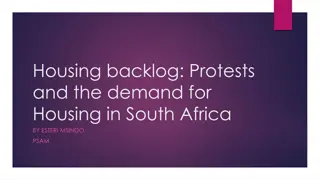New South Wales District Criminal Court Backlog Simulation
the challenges faced by the NSW District Criminal Court due to trial delays, backlog issues, and their impact on defendants, victims, and prison populations. Discover the relationship between case backlog and trial delay, along with initiatives to address these issues through modeling and simulations.
Download Presentation

Please find below an Image/Link to download the presentation.
The content on the website is provided AS IS for your information and personal use only. It may not be sold, licensed, or shared on other websites without obtaining consent from the author.If you encounter any issues during the download, it is possible that the publisher has removed the file from their server.
You are allowed to download the files provided on this website for personal or commercial use, subject to the condition that they are used lawfully. All files are the property of their respective owners.
The content on the website is provided AS IS for your information and personal use only. It may not be sold, licensed, or shared on other websites without obtaining consent from the author.
E N D
Presentation Transcript
New South Wales District Criminal Court Backlog Simulation Hamish Thorburn http://www.checkmyproperty.com.au/sites/default/files/bocsar.png
Criminal Courts in NSW Case heard in Local Court Penalty < 2 years prison Penalty >= 2 years prison Remains in Local Court Pleads not guilty Pleads guilty Committed for trial in District Court Committed for sentence in District Court
Trial delay in NSW Trial delay: time between committal and finalisation in the District Court Median trial delay has risen from 234 days in 2011 to 348 days in 2015 Number of cases awaiting trial in the NSW District Criminal Court (DCC) in December 2015 was 2014 up from 1017 in January 2011
Problems with trial delay More stressful to defendants/victims Cost of holding defendants in remand Cost imprisonment is $292/day Prison population is at record numbers
Relationship with case backlog Case backlog/pending caseload: Number of cases awaiting trial in the NSW DCC Linked to trial delay
Data Numbers of pending, registered and finalised cases by month and registry (Jan 07-Jul 16) Trial lengths by registry (Jan 11 Jun 16) Other data obtained through published court statistics/personal communication
Model fitting Create the model to test various policies for reducing court delay Only fit the model for the registry of Sydney Easier to fit the model with the larger number of cases Covers approximately 33% of all trials Fit the simulation from 2012
Model process Trial cases lodged each month Assigned to an available judge 39% trial proceeds 9% other disposals 34% plead guilty 18% adjourn 5% Aborted/hung juries. 95% Finalised CASE DISPOSED/FINALISED
Other assumptions A trial is always ready to be heard when needed No change in registrations/trial lengths over time (apart from seasonal variation). No variation in trial day outcome probabilities Judges get leave Judges sometimes have to work on short matters
Model validation Arrival distribution assumed to be normal for each month Feb-Nov pass Shapiro-Wilk test for normality Not enough points to check for December, January
Model interventions Examples of scenarios we can test: 1. Increasing court time (i.e. number of judges) 2. Changing the number of trial-day guilty pleas 3. Change the number of cases requesting adjournments 4. Remove the mid-year court vacation period
Model interventions Target: Backlog to 430 cases (Jan 2012 level) by December 2019 Would reduce trial delay to roughly 220 days
Decreasing late guilty pleas Modelling a reform to encourage pleas before committal in the Local Court, rather than close to trial
Decreasing late guilty pleas Case heard in Local Court Penalty < 2 years prison Penalty >= 2 years prison Remains in Local Court Pleads not guilty Pleads guilty Committed for trial in District Court Committed for sentence in District Court
Decreasing late guilty pleas Trial cases lodged each month Assigned to an available judge 39% trial proceeds 9% other disposals 34% plead guilty 18% adjourn 5% Aborted/hung juries. 95% Finalised CASE DISPOSED/FINALISED
Combined interventions It may be more feasible to implement small interventions across different areas rather than one large intervention We try implementing the following interventions 2 additional judges 50% reduction in late guilty pleas 33% reduction in adjournments
Other Possible Interventions Interventions we can currently perform Interventions we can easily incorporate Changes to the number of judges (step and gradual) Changes to the proportion of cases going to trial Changes to the distribution of trial day outcomes Probability that judges work on short matters Changes to the mean number of registrations each month Changes to judges leave/sitting time
Cautions This is only for Sydney, not NSW as a whole Some arrival/trial length assumptions may not hold for other registries Parameter estimates are just estimates (especially around trial-day outcome probabilities)
Summary Trial delay is a big problem in NSW DCC simulation model can be used to test various scenarios Most effect policies are increases in court time Through additional judges or non-vacated courts
